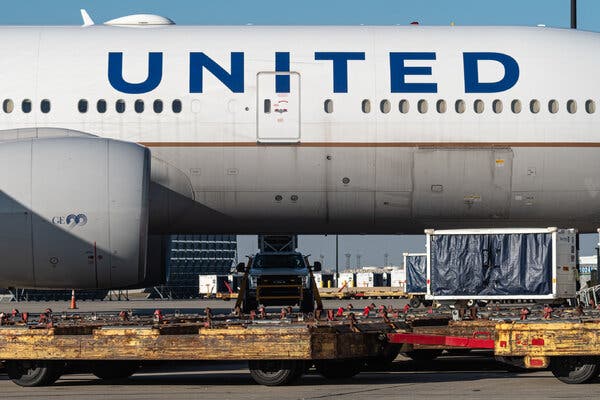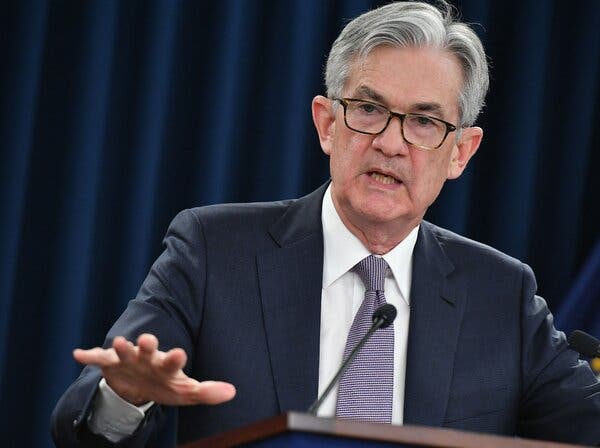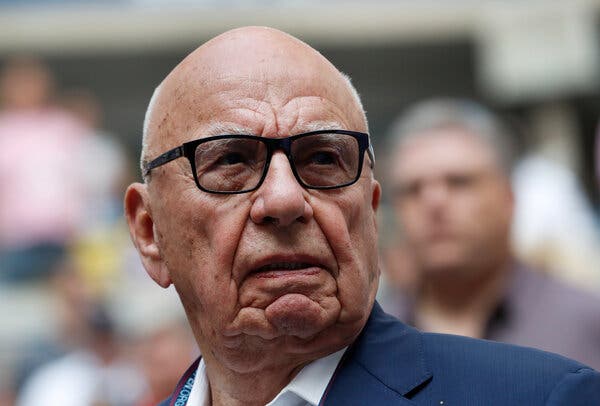New weekly jobless claims
Pandemic
Unemployment
Assistance claims
Lowest since
beginning
of pandemic

New weekly jobless claims
Lowest since
beginning
of pandemic
Pandemic Unemployment
Assistance claims
While vaccination efforts have gathered speed and restrictions on activities have receded in many states, the job market is showing signs of life.
Initial claims for state unemployment benefits fell last week to 657,000, a decrease of 100,000 from the previous week, the Labor Department reported Thursday. It was the lowest weekly level of initial state claims since the pandemic upended the economy a year ago.
On a seasonally adjusted basis, new state claims totaled 684,000.
In addition, there were 242,000 new claims for Pandemic Unemployment Assistance, a federal program covering freelancers, part-timers and others who do not routinely qualify for state benefits, a decrease of 43,000.
Unemployment claims have been at historically high levels for the past year, partly because some workers have been laid off more than once. Much of the drop last week was accounted for by a decline in new claims in Ohio and Illinois, but economists said the overall trend was encouraging.
“This is definitely a positive signal and a move in the right direction,” said Rubeela Farooqi, chief U.S. economist for High Frequency Economics. “We would expect to see further improvements as vaccines roll out and restrictions are lifted.”
Between the state and federal programs, the total number of new jobless claims was just under 900,000 after being stuck above one million a week.
Although the pace of vaccinations, as well as passage of a $1.9 trillion relief package this month, has lifted economists’ expectations for growth, the labor market has lagged behind other measures of recovery.
Still, the easing of restrictions on indoor dining areas, health clubs, movie theaters and other gathering places offers hope for the millions of workers who were let go in the last 12 months. And the $1,400 checks going to most Americans as part of the relief bill should help spending perk up in the weeks ahead.
Diane Swonk, chief economist at the accounting firm Grant Thornton, said she hoped for consistent employment gains but her optimism was tempered by concern about the longer-term displacement of workers by the pandemic.
“The numbers are encouraging, but no one is jumping the gun and hiring up for what looks to be a boom this spring and summer,” she said. “There is a reluctance to get ahead of activity.”
“We’ve passed the point where you can just flip a switch and the lights come back on,” she added. “We need to see a sustained increase in hiring, which I think we will see, but the concern is that it won’t be so robust. It takes longer to ramp up than it does to shut down.”

United Airlines plans to add more than two dozen new flights starting Memorial Day weekend, the latest sign that demand for leisure travel is picking up as the national vaccination rate moves higher.
Most of the new flights will connect cities in the Midwest to tourist destinations, such as Charleston, Hilton Head and Myrtle Beach in South Carolina; Portland, Maine; Savannah, Ga.; and Pensacola, Fla. United also said it planned to offer more flights to Mexico, the Caribbean, Central America and South America in May than it did during the same month in 2019.
The airline has seen ticket sales rise in recent weeks, according to Ankit Gupta, United’s vice president of domestic network planning and scheduling. Customers are booking tickets further out, too, he said, suggesting growing confidence in travel.
“Over the past 12 months, this is the first time we are really feeling more bullish,” Mr. Gupta said.
Airports have been consistently busier in recent weeks than at any point since the coronavirus pandemic brought travel to a standstill a year ago. Well over one million people were screened at airport security checkpoints each day over the past two weeks, according to the Transportation Security Administration, although the number of screenings is down more than 40 percent compared with the same period in 2019.
Most of the new United flights will be offered between Memorial Day weekend and Labor Day weekend aboard the airline’s regional jets, which have 50 seats. The airline said it would also add new flights between Houston and Kalispell, Mont.; Washington and Bozeman, Mont.; Chicago and Nantucket, Mass.; and Orange County, Calif., and Honolulu.
All told, United said it planned to operate about 58 percent as many domestic flights this May as it did in May 2019 and 46 percent as many international flights. Most of the demand for international travel has been focused on warm beach destinations that have less-stringent travel restrictions.
“That is one of the strongest demand regions in the world right now,” Mr. Gupta said. “A lot of the leisure traffic has sort of shifted to those places and it’s actually seen a boom in bookings.”
Delta Air Lines issued a similar update last week, announcing more than 20 nonstop summer flights to mountain, beach and vacation destinations. Both airlines have said in recent weeks that they have made substantial progress toward reducing how much money they are losing every day.

Jerome H. Powell, the Federal Reserve chair, said on Thursday that the central bank was trying to make its economic employee base more racially diverse and he was not satisfied with its progress toward that goal so far.
“It’s very frustrating, because we have had for many years a strong focus on recruiting a more diverse cadre of economists,” Mr. Powell said while speaking on NPR’s “Morning Edition,” after being asked about a New York Times story on the Fed’s lack of Black economists. “We’re not at all satisfied with the results.”
Only two of the 417 economists, or 0.5 percent, at the Fed’s board in Washington were Black, according to data the Fed provided to The Times earlier this year. By comparison, Black people make up 13 percent of the country’s population and 3 to 4 percent of the U.S. citizens and permanent residents who graduate as Ph.D. economists each year.
Across the entire Fed system — including the Board of Governors and the 12 regional banks — 1.3 percent of economists identified as Black. The Fed has been making efforts to hire more broadly, Mr. Powell said, including by working with historically Black colleges.
“It’s a very high priority,” Mr. Powell said of hiring more diversely. “Institutions that focus on diversity and do it well are the successful institutions in our society.”
The Fed chair was also asked about how he would rate the central bank’s sweeping efforts to rescue the economy as markets melted down at the start of the coronavirus outbreak last year. In addition to cutting its policy interest rate to near zero and rolling out an enormous bond-buying program, the Fed set up a series of emergency lending programs to funnel credit to the economy.
Rolled out over a frantic few weeks, the programs included ones that the Fed had never tried before to backstop corporate bond and private company loan markets.
“I liken it to Dunkirk,” Mr. Powell said, referring to the rapid evacuation of British and Allied forces from France in World War II. “Just get in the boats and go.”
Despite the speed of the decision-making, Mr. Powell said that he looked back on the results as positive.
“Overall, it was a very successful program,” he said. “It served its purpose in staving off what could have been far worse outcomes.”

Rupert Murdoch is a buyer again. News Corp, his newspaper empire, acquired Investor’s Business Daily, a financial tip sheet popular with Wall Street traders and investors, for $275 million.
The deal signals a return to acquisitions after Mr. Murdoch spent the last few years slimming down and selling off parts of his businesses.
Little-known among everyday readers, Investor’s Business Daily has been a stalwart source of news for hard-core investors for decades. The stockbroker William J. O’Neil started the publication in 1984, and it was originally meant to compete with The Wall Street Journal (now a part of Mr. Murdoch’s empire). But it has remained an insider’s guide with limited appeal beyond the trading floor.
Investor’s Business Daily has turned into a largely digital publication. It has a website and several mobile apps in addition to its weekly print edition. It has a mix of free content along with data tools that cost hundreds of dollars a year as part of a subscription. The company has “nearly 100,000” online subscribers and is a growing and profitable business, according to News Corp.
The deal could help broaden Mr. Murdoch’s newspaper empire, which has been shrinking over the past few years as the news industry grapples with fading revenues as Google and Facebook siphon away the majority of online ad dollars.
“I have no doubt that IBD’s savvy digital products and journalism will significantly bolster profitability,” Robert Thomson, the chief executive of News Corp, said in a statement announcing the deal.
The company has seen some bright spots. Dow Jones, the division that will manage the new acquisition and already includes The Journal, remains a robustly profitable business. Separately, Mr. Murdoch’s New York Post recently hit a rare milestone, becoming a profitable paper for the first time in recent memory.
News Corp has still had to make steep cuts across its newspaper empire, especially in Australia, Mr. Murdoch’s original home base. Staff at his Australian papers have been gutted and most of the operations have been turned into digital-only publications.

At another time, the blocking of the Suez Canal by a container ship might have sent oil prices soaring. But the reaction has been muted on this occasion because the market was in the midst of pulling back after hitting its highest levels in more than a year in mid-March.
So far, the oil market has largely shrugged off the interruption of traffic through the canal, which has been blocked since Tuesday when the massive vessel, the Ever Given, became stuck.
Analysts say the problem is unlikely to alter more important fundamentals, including worries that an economic recovery from the pandemic may be slower than expected, and a realization that huge volumes of additional oil supplies could eventually come on the market from the Organization of the Petroleum Exporting Nations and other producers.
Prices for Brent crude, the international benchmark, fell by 2.65 percent on Thursday to $62.70 a barrel after rising on Wednesday. Essentially, analysts say, the Suez situation is providing a short-term cushion for a weak market.
“The oil market is aware that the Suez incident is a one-off boost and will be resolved sooner or later,” said Bjornar Tonhaugen, head of oil market research at Rystad Energy, a consulting firm. Of course, if the bottleneck persists, shipowners and their clients will need to ponder whether to continue waiting at the entrances to the canal or turn around and head for the Cape of Good Hope at the tip of Africa, adding weeks to the trip.
Nevertheless, the blocked canal is a major inconvenience with around 30 fuel-carrying ships either waiting to cross the canal or approaching it. According to Kpler, a market research firm, the tankers include a vessel bringing crude from Basrah in Iraq to Spain for Repsol, the Spanish oil company; and another chartered by Chevron, the American giant, headed toward China with crude from Kazakhstan.
“There will be refineries and product consumers who will experience some short-term problems,” said Alex Booth, head of research at Kpler.
On Thursday, tugboats and dredgers were trying to dislodge the vessel, which ran aground during a sandstorm on Tuesday. The company working on the operation said it could take days or even weeks to remove it.
According to Kpler, the tankers that are likely to be delayed hold 8.8 million barrels of crude oil, a little less than one-tenth of a day’s global consumption and worth about $550 million at current prices. There also 15 vessels carrying various petroleum products like jet fuel and gasoline and five giant carriers of liquefied natural gas.

The New Republic named a new editor on Thursday and announced that it was moving back to Washington, its home city for most of its 107-year existence.
Michael Tomasky, who has edited the policy journal Democracy: A Journal of Ideas since 2009 and writes a regular column for The Daily Beast, will take over as The New Republic’s top editor. Mr. Tomasky, 60, will continue his role at Democracy, a quarterly publication. He said joining The New Republic would be “the crowning achievement of my career.”
“This is such a critical moment, with a new administration signaling a fresh era of American politics — but with clear and present threats emanating from an opposition party that has basically become anti-democratic,” he said in a statement. “There is much important work to do.”
He will start his new job on April 19, replacing Chris Lehmann, who will become an editor at large for the magazine.
The New Republic, founded in 1914, went through years of tumult after it was bought in 2012 by Chris Hughes, a co-founder of Facebook. In 2014, most of the staff quit after the top editor, Franklin Foer, departed. Mr. Hughes also moved the magazine to New York from Washington, where it was based for most of its existence.
In 2016, Mr. Hughes sold the magazine to Win McCormack, a publisher and the co-founder of Mother Jones, as well as the founder and editor in chief of the literary magazine Tin House. The New Republic said in a statement that its business operations would remain in New York, while the majority of its editorial staff would move to Washington.
“We are grateful to our outgoing editor Chris Lehmann, who was able to restore stability to The New Republic after a decade of incessant turmoil,” Mr. McCormack said. “He built an excellent staff and inspired them to first-class work.”
Mr. Tomasky was the first U.S. editor of The Guardian when it expanded in America and has contributed to The New York Review of Books and The New York Times.

Stocks on Wall Street dropped on Thursday even as the latest weekly data showed that state unemployment claims fell to the lowest level since the start of the pandemic.
The S&P 500 index and Nasdaq composite both fell less than half a percent in early trading.
Stock trading has grown choppy lately as investors weigh news of rising Covid-19 cases and new lockdowns, or the rollback of efforts to reopen economies, against mounting signs of economic recovery as more people are vaccinated and the effects of the $1.9 trillion stimulus package emerge.
On Thursday, the Labor Department reported that initial claims for unemployment benefits fell last week to 657,000, a decrease of 100,000 from the previous week. On a seasonally adjusted basis, new state claims totaled 684,000.
German lockdown U-turn
As Europe grapples with an emerging third wave of the pandemic, Germany has canceled a strict five-day lockdown that was set to start at the beginning of April. Chancellor Angela Merkel said she took “ultimate responsibility” for the reversal, which came after a large backlash to the plan, even from within her own party, and anger from retailers and restaurants.
“In the near term, this avoids the negative economic consequences of a lockdown,” Paul Donovan, an economist at UBS Global Wealth Management, wrote in a note. But over a longer a period of time, markets will question whether this will just delay Germany’s ability to restrain the virus and slow down the recovery, he added.
European stocks were lower Thursday. The Stoxx Europe 600 index was down 0.8 percent and the FTSE 100 in Britain fell 1 percent.
Suez Canal
Oil prices dropped. Futures of Brent crude, the European benchmark, fell 1.5 percent to $63.45 a barrel and futures of West Texas Intermediate, the U.S. benchmark, fell 1.8 percent to about $60 a barrel.
On Wednesday, oil prices jumped more than 5 percent after a container ship got stuck in the Suez Canal, blocking one of the world’s key shipping routes, which is also an important artery for the flow of oil. On Thursday, efforts to dislodge the ship were ongoing as some 150 other ships were waiting on either side.
The company trying to move the ship warned it could take weeks. Shipping has already been heavily disrupted by the pandemic, sending freight prices soaring.
Elsewhere in markets
-
Nike shares dropped more than 3 percent in early trading, and H&M shares fell close to 4 percent in Stockholm after Chinese social media users called for a boycott of the companies. The two fashion retailers published statements expressing concern over reports of forced labor in Xinjiang. Nike’s statement said the company didn’t source cotton from the region, but the online attacks have called it a boycott of the region’s cotton farmers.
-
Yields on 10-year Treasury notes fell to about 1.6 percent.
-
Tribune Publishing’s board recommended that shareholders approve a purchase offer from the hedge fund Alden Global Capital over a higher bid from a Maryland hotel executive, according to a securities filing Tuesday. Alden, Tribune’s largest shareholder, agreed last month to buy the rest of the company at $17.25 per share and take it private in a deal that would value the company at $630 million. Last week, Stewart W. Bainum Jr., a hotel magnate, made an $18.50 per share offer for the whole company.

Esther George, the president of the Federal Reserve Bank of Kansas City, says that although the outlook for growth has improved as vaccinations increase and the government rolls out relief packages, the path of the pandemic remains a major question hanging over the U.S. and global economies.
“We’re not out of this yet,” Ms. George said in an interview on Wednesday. “It’s hard to know what the dynamics will be on the other side.”
Ms. George said she was focused on labor force participation as a sign of the job market’s strength more than the headline unemployment rate, which has fallen to 6.2 percent from a 14.8 percent peak but misses many people who aren’t looking for new jobs after losing theirs during the pandemic. Participation, the share of people working or looking, remains a hefty two percentage points below its prepandemic levels.
“That might be the thing I really watch in the coming months,” she said.
Ms. George expects inflation to “firm,” but that the process is likely to take a while, she said, and it is “too soon to say” whether it will end with a more meaningful rise. Some prominent economists have begun to warn that prices, which have been low for decades, could rise rapidly as the government spends big and the Fed keeps rates at rock bottom to support the economic recovery.
“Wages are a very telling factor in a story about inflation,” Ms. George said.
Many economists look for faster growth in compensation as a signal that inflation is sustainable, not just driven by short-lived supply constraints or temporary quirks in the data.
Ms. George’s colleagues, including Jerome H. Powell, the Fed chair, have been clear that they expect prices to move higher this year but will not necessarily see that as an achievement of their inflation goal. The Fed redefined its target last year and now aims for 2 percent annual price gains, on average, over time.
Ms. George did not venture a guess of when the Fed will hit its three criteria for raising interest rates: full employment, 2 percent realized price gains and the expectation of higher inflation for some time. Some Fed officials expect to raise rates next year or in 2023, but most of them expect the initial increase to come even later.






